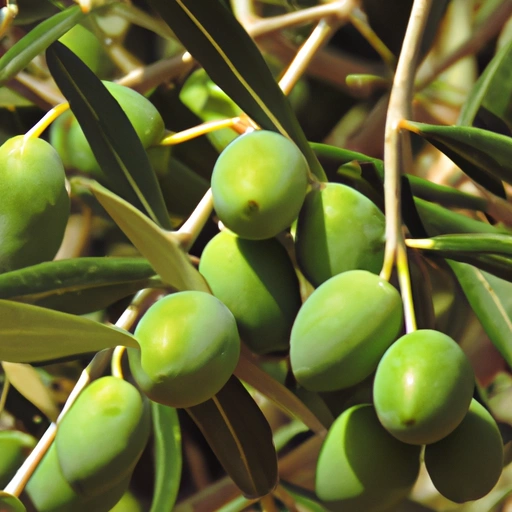Green Olive
Description

Green olives are the unripe fruits of the olive tree, harvested before they mature and turn black. Prized for their firm texture and somewhat bitter, tangy flavor, they are a staple in Mediterranean cuisine and are enjoyed worldwide. Green olives come in various sizes and can be found pitted, stuffed, or sliced, often preserved in brine, vinegar, or oil.
Common uses
Green olives are commonly used as a garnish, snack, or ingredient in various dishes. They are often found in salads, on pizzas, and in sandwiches. Additionally, they are a key component in appetizers such as tapenade and are an essential element in the iconic Greek salad.
Nutritional value
Calories
Green olives typically contain about 20 calories per olive (4g), depending on their size and preparation.
Protein
They provide a modest amount of protein, with 0.1 grams per olive (4g).
Fat
Green olives are high in monounsaturated fats, with about 2 grams per olive (4g).
Carbohydrates
They are low in carbohydrates, with less than 0.5 grams per olive (4g).
Vitamins
Green olives are a source of vitamin E and contain small amounts of other vitamins such as vitamin A.
Minerals
They are rich in minerals like iron, calcium, and potassium. In a serving of four large olives (about 18g), you'll find around 0.3 mg of iron and 4 mg of calcium.
Health benefits
Green olives are known for their antioxidant properties and are associated with cardiovascular benefits due to their healthy fats. The oleic acid found in olives can help reduce inflammation and may lower the risk of heart disease.
Potential risks
Due to their high sodium content, excessive consumption of green olives may lead to increased blood pressure. Individuals with sodium-sensitive hypertension should consume them in moderation.
Common recipes
Green olives are integral to many Mediterranean dishes such as tapenade, Greek salads, and Italian antipasti. They also make a great addition to chicken tagine and fish recipes.
Cooking methods
While often eaten raw, green olives can be roasted, baked, or sautéed. They are also commonly used to add flavor to braised dishes.
Pairing with other ingredients
Green olives pair well with feta and goat cheeses, citrus fruits, tomatoes, and herbs like rosemary and thyme. They are also excellent with dry white wines and aperitifs.
Summary
Green olives are a versatile and flavorful ingredient with a rich history and nutritional profile. Their unique taste and texture make them a favorite in global cuisines, and they offer various health benefits when consumed as part of a balanced diet.